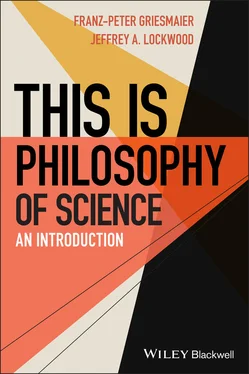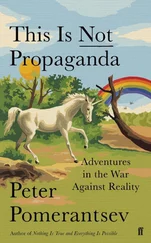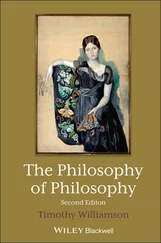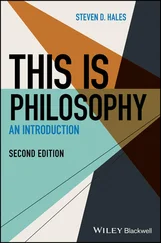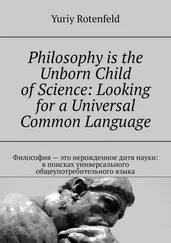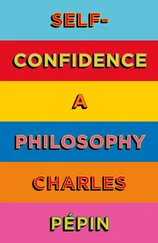Franz-Peter Griesmaier - This is Philosophy of Science
Здесь есть возможность читать онлайн «Franz-Peter Griesmaier - This is Philosophy of Science» — ознакомительный отрывок электронной книги совершенно бесплатно, а после прочтения отрывка купить полную версию. В некоторых случаях можно слушать аудио, скачать через торрент в формате fb2 и присутствует краткое содержание. Жанр: unrecognised, на английском языке. Описание произведения, (предисловие) а так же отзывы посетителей доступны на портале библиотеки ЛибКат.
- Название:This is Philosophy of Science
- Автор:
- Жанр:
- Год:неизвестен
- ISBN:нет данных
- Рейтинг книги:5 / 5. Голосов: 1
-
Избранное:Добавить в избранное
- Отзывы:
-
Ваша оценка:
- 100
- 1
- 2
- 3
- 4
- 5
This is Philosophy of Science: краткое содержание, описание и аннотация
Предлагаем к чтению аннотацию, описание, краткое содержание или предисловие (зависит от того, что написал сам автор книги «This is Philosophy of Science»). Если вы не нашли необходимую информацию о книге — напишите в комментариях, мы постараемся отыскать её.
This is Philosophy of Science
This Is Philosophy???
, This is Philosophy of Science: An Introduction
This is Philosophy of Science — читать онлайн ознакомительный отрывок
Ниже представлен текст книги, разбитый по страницам. Система сохранения места последней прочитанной страницы, позволяет с удобством читать онлайн бесплатно книгу «This is Philosophy of Science», без необходимости каждый раз заново искать на чём Вы остановились. Поставьте закладку, и сможете в любой момент перейти на страницу, на которой закончили чтение.
Интервал:
Закладка:
Hempel summarized and generalized this example, and others, into the following model of theory confirmation:
Theory predicts Observation
Observation is made
Theory is (better) confirmed
The first thing to notice here is that confirmation is different from proof. If a theory entails an observation and the observation is made, it doesn’t logically follow that the theory is true. To think otherwise would be to commit a logical fallacy. To see this, consider: “If it rains, the streets are wet. The streets are wet. Thus, it is raining.” But the conclusion doesn’t follow from the premises, because someone could have hosed down the streets, and that’s why they are wet. However, if the prediction is borne out, we can say that the theory has been confirmed to a certain degree. This in turn means that we have some reason for believing the theory.
Here’s another example following the same pattern. Suppose I want to confirm the hypothesis that all ravens are black. How would I do this? Following Hempel’s advice, I infer a prediction from my hypothesis and then determine whether it is true or not. What follows from the claim that all ravens are black? One thing that comes to mind immediately is that the next raven I see will be black. Thus,
Raven Theory predicts “Next raven is black”
Observation “Next raven is black” is made
Raven Theory is (better) confirmed
What’s important about this second example is that the theory talks about all ravens – past, present, and future, and everywhere they exist. Suppose I have seen 200 ravens, and all of them have been black. Thus, I inductively infer my Black Raven theory. Now I want to confirm it by using Hempel’s procedure, as we have just done. But, seriously, how much of a confirmation can that one black raven provide? Remember, my theory talks about all ravens.
3.2.2 Falsification to the Rescue
This problem led some philosophers to abandon any attempt to confirm theories and to look at the situation from a different perspective. The Austrian philosopher Karl Popper introduced the twin notions of falsification and corroboration to describe how we (should) go about selecting the theories we accept. The idea is fairly straightforward and starts with the observation that while we cannot conclusively confirm any theory, we can conclusively falsify a theory. Take our example involving the color of ravens. Perhaps 200 ravens might be good evidence for the claim that all ravens are black; 2000 black ravens would be even better evidence. However, no matter how many ravens you manage to observe, you can never conclusively establish that all of them are black. But you can conclusively establish that not all of them are black, should that be indeed the case. How? Simply find a raven that is not black. In other words, one counterexample to the claim that all ravens are black suffices to falsify it. The general model of this process is very similar to that of confirmation by prediction, with the important exemption that the predicted observation is not made:
Raven Theory predicts “Next raven is black”
Observation “Next raven is black” is not made
Raven Theory is falsified
Popper made falsification the hallmark of his approach. Scientists, on his view, conjecture all sorts of theories and hypotheses. Whether any of them are worth keeping depends on two factors: How much do they tell us about reality, and whether or not they have been falsified. If we find a theory that has a lot of empirical content, and that we have not been able to falsify despite subjecting it to rigorous testing, we consider it as worth keeping. Popper’s technical term for “not falsified after rigorous testing” is “corroborated.” Thus, a theory is corroborated to the degree to which we have tried to falsify it and failed to do so. Highly corroborated theories are those worth keeping.
Why is having a lot of empirical content important, and how do we measure the content? First, theories with little to no content are not easily falsifiable. Suppose you restrict your raven theory in the following way: “All the ravens in my raven coop are black.” Unless you have overlooked a raven in your coop, nothing can falsify this theory. It is so specific that there are not many falsifiers. As such, it is not a very interesting theory. So, let’s be a little more daring: “All ravens in my yard are black.” Ravens come and go, and so it might turn out that one morning, you get up and discover that a maroon raven is perched on a tree limb in your yard. However, even this daring theory is still a far cry from the original theory we considered, according to which all ravens are black. Clearly, it has a lot more content – talks about a lot more things – than the theory about the ravens in the coop. Since it talks about more things, there are more things that can falsify it. Thus, we can now answer, at least in principle, the question how we should measure the content of a theory. To a first approximation, the content simply is the set of things that could falsify it, were you to observe them.
To summarize. Theories that involve universal generalizations, such as “all ravens are black,” can never be conclusively confirmed. They can, however, be conclusively falsified, or so Popper claimed. Theories that survive a lot of serious attempts to falsify them have proven their worth: they are corroborated. What science aims for is corroborated theories. Thus, we don’t need a theory of confirmation. Problem solved.
3.2.3 Ravens and White Chalk
The falsification approach has a second advantage: It solves a notorious problem that arises for Hempel’s model of confirmation, a problem of which Hempel himself was aware. The problem itself is a bit on the abstract side and will strike any working scientist as a “typical philosophical problem,” but it is worth considering at this juncture because it is both clever and troubling. Imagine that an ornithologist had spent his career studying ravens around the world. He’s seen a couple thousand of the birds, and every one has been black. So, he’s working on a paper proposing that all ravens are black, but he’s wondering what evidence he can use in addition to his observations of the birds. While lecturing in class, he looks at the chalk in his hand, stops speaking, and a big smile comes to his face. The ornithologist realizes that the white chalk supports his thesis. But how could this be?
Notice first that all ravens are black means the same as that if anything is a raven, then it is black. Thus, if it is not black, it is not a raven. In other words, all things that are not black are not ravens. Therefore, “all ravens are black” is logically equivalent to “all nonblack things are nonravens.” Now, it seems clear that if a piece of evidence confirms a hypothesis H, that same piece of evidence should also confirm all those hypotheses which are logically equivalent to H. This widely accepted principle is known as Hempel’s equivalence condition . 1Suppose we call the hypothesis “All nonblack things are nonravens” H. H must be confirmed by any nonblack thing that is not a raven. For example, a piece of white chalk will confirm H. However, since H is equivalent to “All ravens are black,” it follows that the piece of white chalk also confirms it! Let this sink in: The ornithologist’s claim that all ravens are black is confirmed by the observation of a white piece of chalk. To many, this seemed strange enough to call it paradoxical, and so the problem received its name: Hempel’s Raven Paradox.
Let us look at the paradox in explicit argument form:
1 Positive instances confirm a universal generalization, such as the generalization “All ravens are black.”
Читать дальшеИнтервал:
Закладка:
Похожие книги на «This is Philosophy of Science»
Представляем Вашему вниманию похожие книги на «This is Philosophy of Science» списком для выбора. Мы отобрали схожую по названию и смыслу литературу в надежде предоставить читателям больше вариантов отыскать новые, интересные, ещё непрочитанные произведения.
Обсуждение, отзывы о книге «This is Philosophy of Science» и просто собственные мнения читателей. Оставьте ваши комментарии, напишите, что Вы думаете о произведении, его смысле или главных героях. Укажите что конкретно понравилось, а что нет, и почему Вы так считаете.
